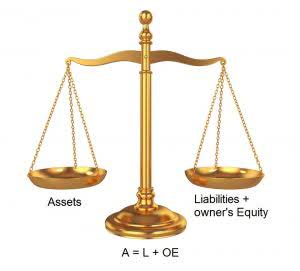Accounting Cost, Budgeting, Analysis
Content

It informs all stakeholders of the financial state of the business so managers, investors and owners can make intelligent, informed decisions to succeed. Most companies don’t use all of them, but the relevant use cases vary by organization, often depending on a company’s size, the industry, and even the practices and preferences of individual managers. Yes, there are a lot of numbers and equations in managerial accounting but you can actually make it through the course without knowing a single formula. When you think of these concepts in terms of the processes that are going on in the business, the numbers are easy to calculate.
- Managers faced with specific decisions may request information on any number of business operations to chart the best possible course of action.
- We could add a host of others, such as constraint analysis, cash flow analysis, etc., but the best way to learn core managerial accounting skills is through practice.
- These books contest that traditional accounting methods are better suited for mass production and do not support or measure good business practices in just-in-time manufacturing and services.
- Variance analysis is a systematic approach to the comparison of the actual and budgeted costs of the raw materials and labour used during a production period.
- Managerial accounting also involves reviewing the constraints within a production line or sales process.
- Contact a student success coach to learn more about the Boise State MBA program’s approach to managerial accounting and how it can benefit you in your career.
- Expanding the business will include a substantial investment in rental space.
Aspiring managerial accountants may be able to boost their earnings — and help themselves stand out in the job market — by earning an advanced degree. Financial accounting must conform to certain standards, such as generally accepted accounting principles (GAAP). All publicly held companies are required to complete their financial statements in accordance with GAAP as a requisite for maintaining their publicly traded status. Most other companies in the U.S. conform to GAAP in order to meet debt covenants often required by financial institutions offering lines of credit.
Accounting information for internal management.
Thank you for also including videos as it helps to understand it even better. Another important classification in What to Expect from Accounting or Bookkeeping Services is cost behavior. Cost behavior is how a cost reacts to changes in production, usage, or sales quantity. A manufacturing business is a business entity that uses raw materials, parts, or other components to make a finished good. The finished good is then considered inventory in a manufacturing organization.
What are the two types of accounting managerial?
- Cost Accounting: Cost accounting is used to measure and analyze all fixed and variable costs associated with the production of products or performance of services.
- Inventory Turnover Analysis:
- Constraint analysis:
- Budgeting:
- Trend Analysis and Forecasting:
The scope of managerial accounting is wide and is useful in several company operations. Management accountants are responsible for rearranging information on financial statements. Managerial accounting helps to find out the cause and effect of the financial results, use easy-to-understand techniques, and check the impact of the business decisions. Moreover, it is used to set business goals, formulate plans, and compare the performance of different departments. Managerial accounting encompasses many facets of accounting aimed at improving the quality of information delivered to management about business operation metrics. Managerial accountants use information relating to the cost and sales revenue of goods and services generated by the company.
When are you planning to take the exam?
Management accounting is extremely important for businesses because it allows them to translate hard data about their finances into reports that can be analyzed and used for strategic business decisions. After all, financial accounting doesn’t mean anything if you don’t apply the insights to your plans and decisions for your business. Since managerial accounting deals mainly with planning and decision making, we are looking into the future and trying to predict what will happen based on historical trends. We are always looking for the most up-to-date information to use in these tasks.

The contribution margin of a specific product is its impact on the overall profit of the company. Margin analysis flows into break-even analysis, which involves calculating the contribution margin on the sales mix to determine the unit volume at which the business’s gross sales equal total expenses. Break-even point analysis is useful for determining price points for products and services. https://simple-accounting.org/understanding-the-cost-of-bookkeeping-for-small/ Some of the managerial topics involve the computation of a manufacturer’s product costs that are needed for the external financial statements which must comply with US GAAP. Other topics involve analyses and reports that are not distributed outside of the company but are used by management in its decision making and in the planning and control of the business operations.
Managerial Accounting
On the other hand, financial accounting reports are tightly regulated, especially when it comes to a company’s balance sheet, income statement, and cash flow statement. The information contained in these statements is available for public review and used by investors, which is why companies need to be very careful about how they report figures and make calculations for these. Financial accounting is a type of accounting that is focused on communicating the financial information of a company to external stakeholders, such as the IRS, creditors, investors or the U.S. They work internally to meet the needs of clients, customers, or other outside entities that do not work directly with the company but can affect or be affected by the business or projects.

